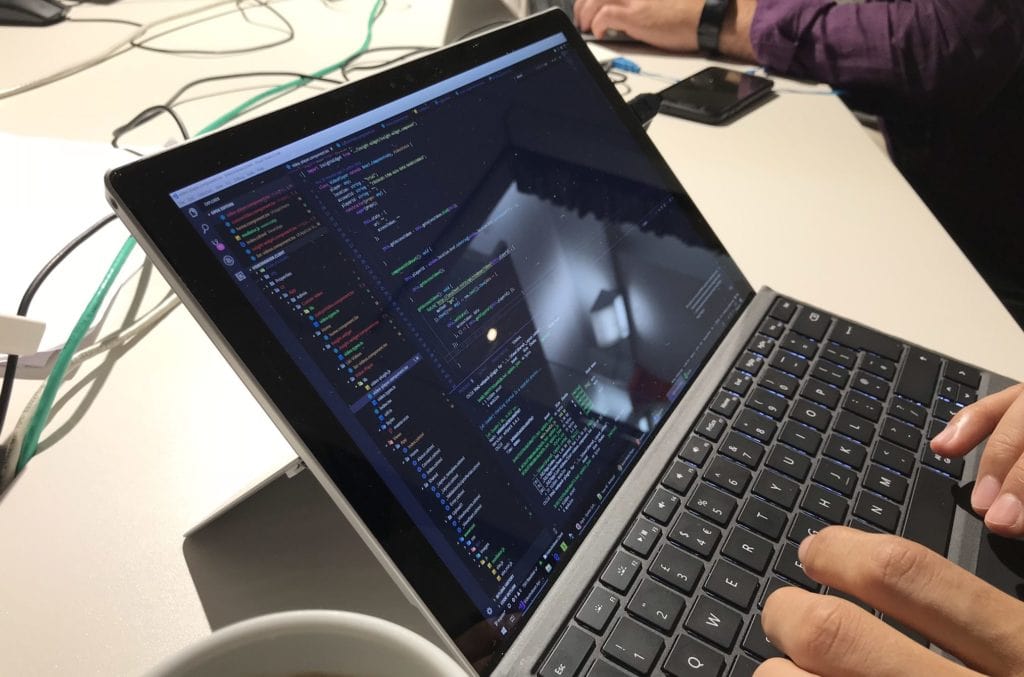First Spafax Hackathon Targets Chatbots and Machine Learning
Share

APEX Insight: For 48 hours from June 4-5 Spafax’s London office hosted its first hackathon to explore how artificial intelligence (AI) could be used to improve its digital services. The development team is now thinking about how to take its findings to the next level.
The participants in Spafax’s first hackathon were split into two teams and given two days to create a basic working prototype for a digital product aimed at improving the passenger experience. One was challenged to experiment with chatbots, while the other looked at new ways to harness machine learning.
By applying a new technology called Language Understanding Intelligence Service (LUIS) to a chatbot, the team found that, with a little training the bot could start to intelligently identify new greeting phrases not previously input by the development team.
Using Microsoft Azure’s Cognitive Services, the team was also able to incorporate speech and image recognition into the chatbot. For example, they created a bot where you could upload an image of a famous actor. The bot could recognize who was in the picture and suggest movies featuring them.
The bot could do the same with written text. Kavin Joysury, software development manager at Spafax, explained, “The chatbot is able to pick up keywords and respond with an amazing level of accuracy. We now want to see if the chatbot can respond to more difficult queries, such as ‘What’s the film with Matt Damon on Mars?’ That’s one of our goals.”
“We’re looking at this as an extension to Spafax Profile, our entertainment personalization tool. This year, we released our first Amazon Alexa skill with our Spafax Profile product, so we see the chatbot as complementary to that,” continued Kavin. “However, we know that you could take the same chatbot and put it on Facebook, Twitter or any other social media platform. It could be deployed across airlines’ own sites and the user experience would be consistent across all platforms.”
“The technology extracts as much information about the video as it can. We are able to withdraw data on actors, brands, certain objects or even scenes.” – Kavin Joysury, Spafax
The second team was focused on machine learning, as Spafax wanted to explore a solution called Video Indexer after learning about it at the Microsoft Build event for developers in Seattle earlier this year.
Using machine learning, you can teach Video Indexer to pick up certain things when you run content through the system. This is useful for the Spafax team, who are constantly watching in-flight content to flag up things like nudity and strong language, but for the development team, Video Indexer is exciting for the opportunity it provides to create and harness a vast amount of metadata.
Kavin commented, “The technology extracts as much information about the video as it can. We are able to withdraw data on actors, brands, certain objects or even scenes. In one case, the software was able to pick up a scene on a beach or snow on mountain tops. The possibilities are endless.
“With all this metadata, we are looking at enhancing Spafax Profile with a new subscription service. Let’s say you are interested in food, for example – we could send you a targeted push notification saying, ‘we have something new you might be interested in,'” he added.
The metadata could also be used to introduce a recommendation service for Spafax Profile. “We can track the types of trailers an individual is watching. If we see the user is watching trailers including a certain actor, the recommendation engine along with the metadata could suggest other movies starring the same actor,” Kavin concluded.
The development team is already looking forward to another similar event in the future, with Jonathan Gilbert, director of Digital Content & Innovation at Spafax, claiming, “We are keen to build out the hackathon program, its participation, outputs and partnerships.”


